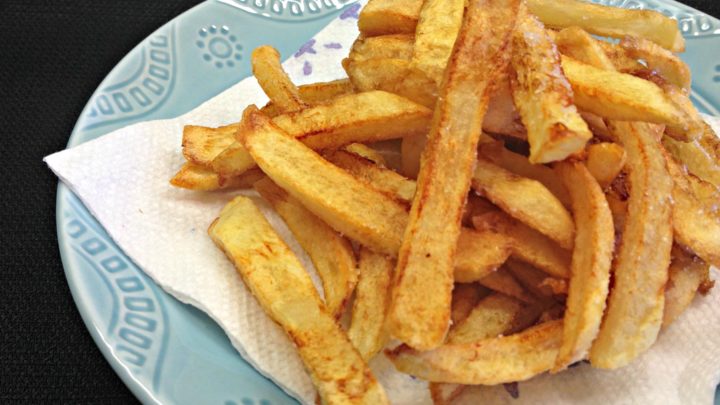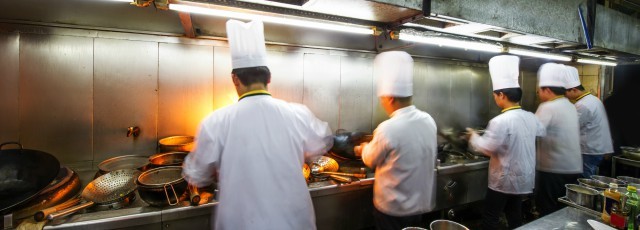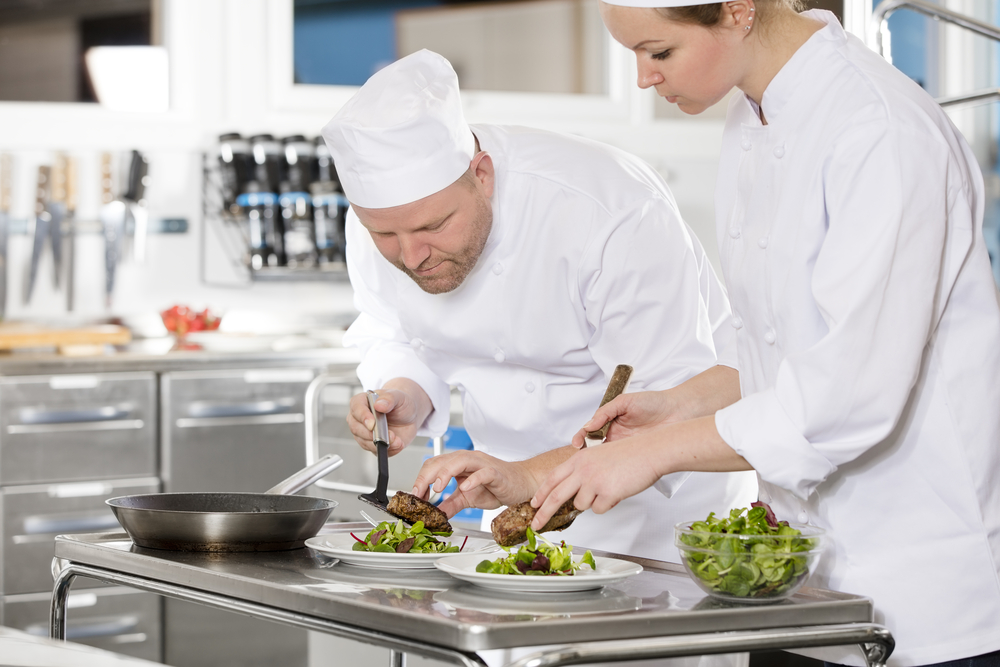
These cooking tips and tricks can help novices and experts alike make better food. You need to be able to order ingredients correctly when you add them into a recipe. Different ingredients cook at different rates. Learn how to use all your senses to prepare food. If you don't have the sense of smell, you can learn to use a thermometer for checking the temperature of food. And finally, don't be afraid to experiment with new flavors and textures.
Ten simple cooking techniques
If you enjoy trying new foods, learning how to cook can make your life more enjoyable. Even the simplest of dishes can be made more delicious and even healthier if you learn some basic cooking tricks. There are many methods of cooking chicken, salmon, broccoli, and black beans. The first step in the process is to beat eggs. Cooking eggs takes just five minutes! Another useful cooking trick is blotting meat before you cook it, which ensures that the piece of meat gets a nice sear.
It is a good idea to defrost frozen ingredients before cooking. This will ensure that they don't lose their texture. It is important to place frozen ingredients in a cabinet nearby so that they don't get heated up or steamy from the refrigerator. This will preserve their taste. If you don’t have a freezer you can freeze them and defrost them in a refrigerator.
Proper measuring cups
There are many types and sizes of measuring cups. A set of six measuring cups includes one for each of the most common measurements. These are great for measuring dry ingredients, such as flour, but they're not always the most convenient. A set of these cups will allow you to measure all liquids and spices accurately. Here are some helpful tips for buying measuring cups for cooking.

You should first buy a set that is both dry and liquid. They can be filled with dry ingredients, so you don't have to worry about them getting contaminated. Avoid dipping the measuring cup in flour or other dry ingredients. This can cause inaccurate measurements. You'll get a more accurate measurement if you use liquid measuring cups that have an ambiguous measurement line.
Food storage in the right location
You must first identify what food you are going to be using in order to store it correctly. Some items can be kept in the fridge and pantry. Other items should be stored in glass containers. Keep non-perishable goods in glass jars, or other airtight containers. Store them in a dark, cool location away from direct sunlight. Below are some suggestions for how to properly store food in the fridge.
First, make sure that your kitchen is clutter-free and clean. Avoid storing food next to household goods. Remember that food is sensitive to temperature, so store it in a cool, dark cabinet. Make sure your containers are tightly-fitted so that any excess food will be consumed first. Keep food from heating sources, such as pipes, and keep it out of reach of children. Prolonged exposure to light will also affect the food's color.
Preparing food with your own senses
It can improve the cooking experience by using all your senses. To help you select the right ingredients, your taste buds are an excellent way to go. You will find it easier to predict the cooking times if you can envision the flavors in a particular dish. You can also use your visual senses to detect smell and touch. You can use your imagination and listen to your body when you shop for ingredients. For example, you might substitute broccoli for red cabbage if you think it will taste equally good.

It'll make it easier to find new foods, judge their quality, enjoy them more, and use all five of your senses. You will discover that there is a whole world beyond what you think. You can discover the science of flavour and use your senses to cook. It will be easy to tell the difference between an emoji and a real emojipeach. Even rhubarb and grapefruit can be appreciated bitterly. Don't be afraid to use your senses if you don't like the look of your kitchen.
FAQ
Do I have to learn how to cook with my children?
Yes! Children love to help in the kitchen. It's a fun activity which teaches children responsibility and teamwork. Children can help in everything, from washing vegetables and cutting onions. Your children will be more comfortable helping you cook if you teach them safe techniques for handling knives.
How do I become a Chef?
There are many avenues to become a professional chef. You can begin by taking a course at a community college or vocational school. You can then look into going to culinary school. Finally, you can take a paid internship.
How can I learn more about cooking?
There are numerous cooking classes offered across the country. Many schools offer classes in baking, pastry, wine tasting, and more. A local community college, vocational school, or private institution can offer classes in cooking.
How can I be motivated to cook?
When you cook with your family and friends, cooking is enjoyable. Cooking for your own family is much easier than making meals for others. You can be inspired to cook if you try something new. You'll learn new techniques, and you'll be inspired to cook. Also, you can use recipes from different cultures to expand your culinary knowledge.
What are the Essential Skills to Be a Chef?
A bachelor's degree in culinary art is necessary to become a professional chef. A series of tests must be passed by the ACF. After you have completed all requirements, you will receive a certificate confirming your qualifications.
Which is the best way for you to learn how to cook?
Cooking is a skill that every person should learn. You will miss out on great meals if you don't learn how to cook. When learning how to cook, the first thing to do is find a recipe you love and follow it closely. Next, you'll want to practice making small changes to the recipe until you feel comfortable making the dish yourself. Next, you can cook for others. This will allow you to improve your cooking skills and test your abilities.
Statistics
- On average, chefs earn $58,740 a year, according to the BLS. - learnhowtobecome.org
- You'll be amazed that over 90% of CIA students receive scholarships and grants to finish their culinary studies. (ischoolconnect.com)
- In the United States, the category is estimated at $23.2 billion annually and is growing faster than the market. (washingtonpost.com)
External Links
How To
How to make the perfect omelet
Omelets are a favorite breakfast food of mine. But how do you make them perfectly? I've tried many different methods and recipes, but none of them seem to work! I have some tips and tricks to help you make delicious, fluffy omelets every single morning.
Before we start making omelets, let's remember that eggs are temperamental. They must be fresh, preferably from the organic market, and be kept cold until cooking. You must keep them cool enough to allow the whites to form properly and the yolks to become too runny if they're not kept at the right temperature. This makes your omelets look weirdly colored. If you intend to cook your eggs immediately, it's best to use room-temperature egg.
Another tip is to separate your egg before adding it into the pan. The yolk and white should not be mixed together as this can cause the omelet's curdle.
The egg can burn if it is placed directly on the stovetop. Instead, heat the egg for 10 seconds in the microwave before placing it in the pan. The microwave heat is sufficient to cook the egg without overcooking.
Next, let's discuss mixing the eggs. Mix eggs well together. To do this, grab the bowl of the mixer and turn it upside down. Now shake the bowl vigorously. This way, the air inside the bowl gets whipped around and mixes the egg thoroughly.
Now it's time to have fun: pour the milk into the mixture. Mix half of the milk with the eggs. Then fold the eggs in half into the remaining milk. Do not be alarmed if there are still egg streaks visible. Once the omelet flips, these streaks will disappear.
After you have folded your eggs, heat up the oil on medium heat. Wait for it to get hot. Add 1/4 cup butter to the oil and swirl it around to coat all sides of the pan. Carefully open the pan's lid and add salt to the pan. An additional pinch of salt will prevent the omelet form sticking to your pan.
Once the omelet has formed completely, cover the pan and let it set for a few minutes. Flip the omelet upside down or with a spatula. Cook the other side for another minute or two. Take the omelet out of the pan and immediately serve.
This recipe is best when used with whole milk. But, you can use skimmed milk as well.